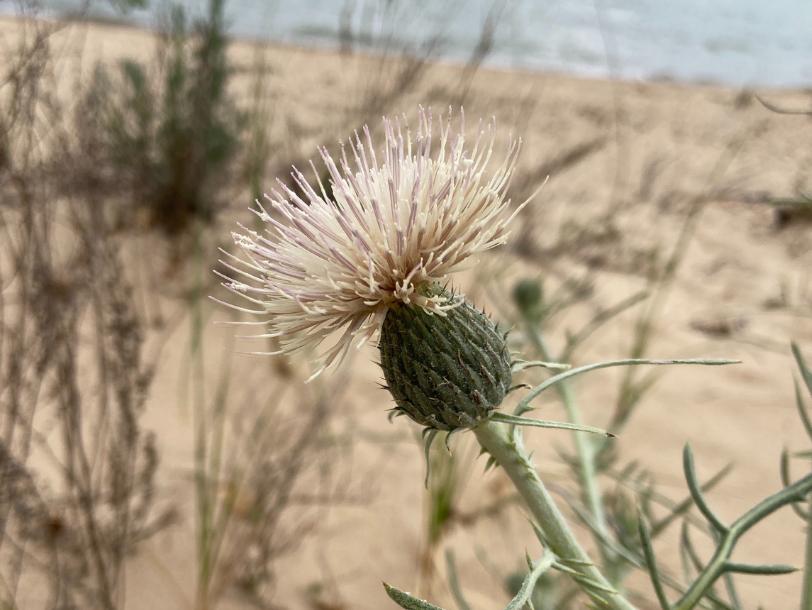With National Invasive Species Awareness Week (Feb. 26 – March 3, 2024) just around the corner, we wanted to call attention to the hard work our members are doing to combat these invaders.
Lining roads, populating waterways and lurking in your own backyard, non-native plants and animals have hitched a ride with humans and spread across the globe. Whether transported intentionally or as cargo ship stowaways, these pesky species are thriving to the detriment of native plants and animals.
The SCA’s Northwest Indiana Dunes Restoration Crew is helping stop the spread in their area. Last year alone, this team removed 23 acres of invasive species at Indiana Dunes National Park to help preserve natural habitats, including the federally threatened pitcher’s thistle (Cirsium pitcheri).

Pitcher’s thistle. (U.S. Fish & Wildlife Service)
An important food source for certain birds and small mammals, Pitcher’s thistle has declined in recent years due to habitat destruction from development and recreation. With unwanted invasive species out of the way, the remaining native plants have more room to grow.
“Learning about invasive species and how and why we need to either remove or control them was very interesting. Being able to clear areas and knowing that native trees will now be able to grow and thrive there was humbling,” said SCA crew member Bella Munoz.
The U.S. Forest Service estimates that 50,000 animal and plant species in the United States are not naturally found here. Nearly 5,000 of those are considered invasive because of the ecological and economic damages they cause.
Invasive species are the reason behind more than 50% of native species being classified as either endangered or threatened. While the SCA’s Native Plant Corps is working to attack this threat, they can’t do it alone.
Your donation can help our crews restore plant and wildlife habitats across the country.